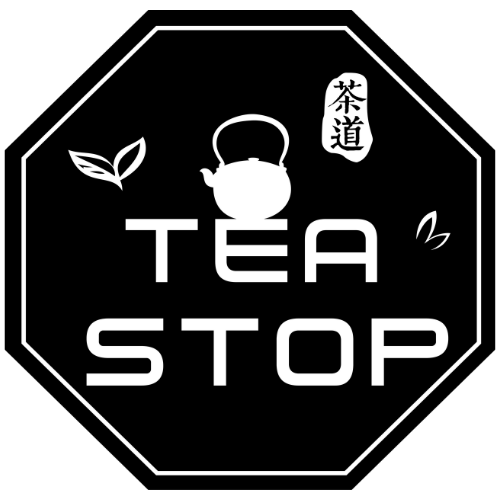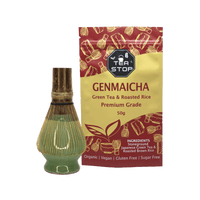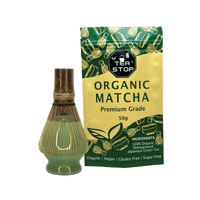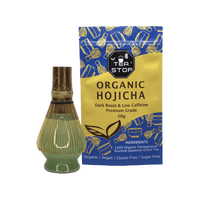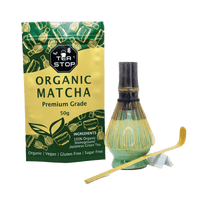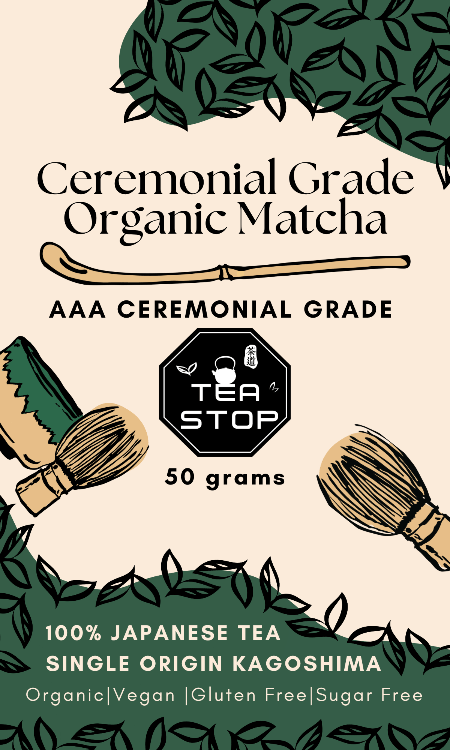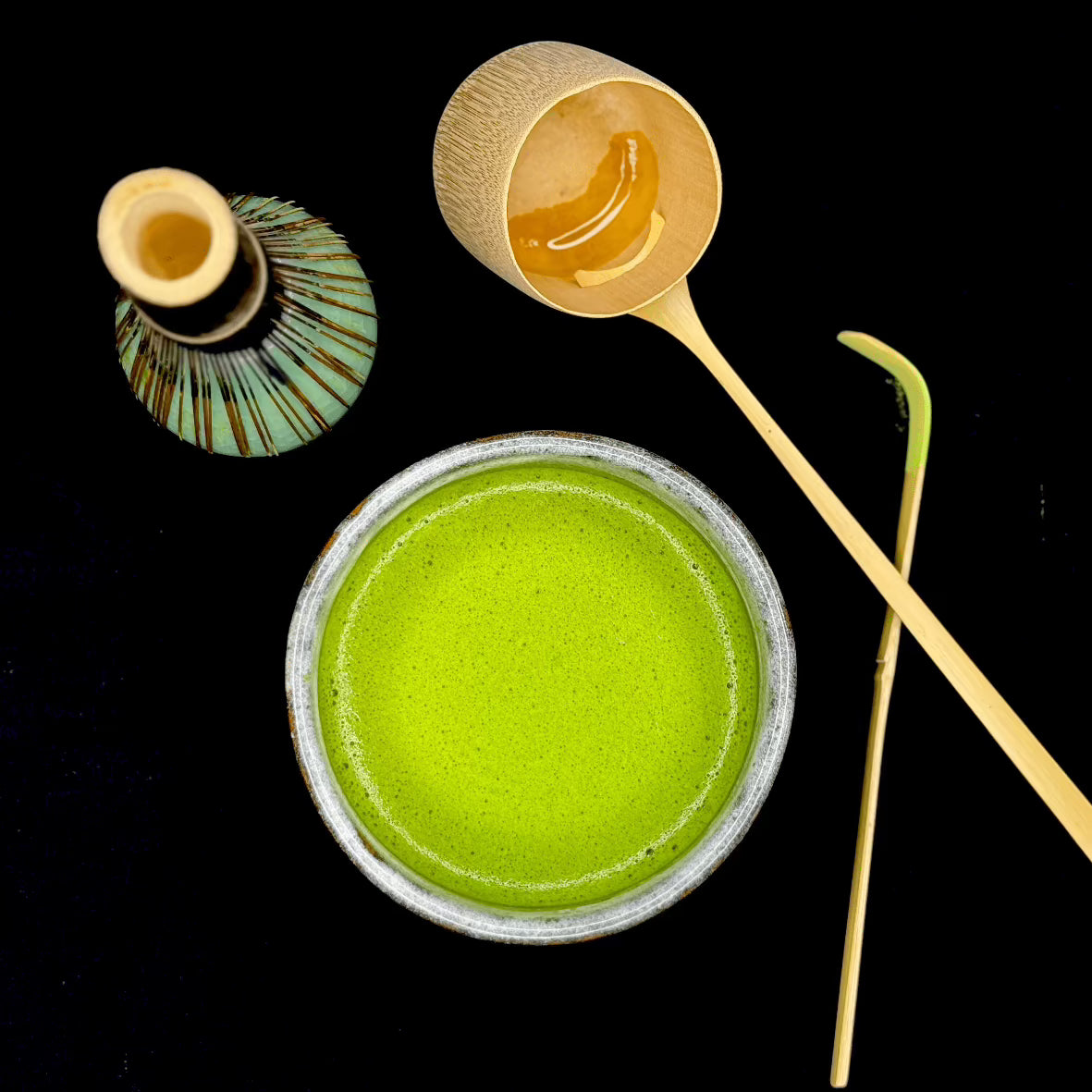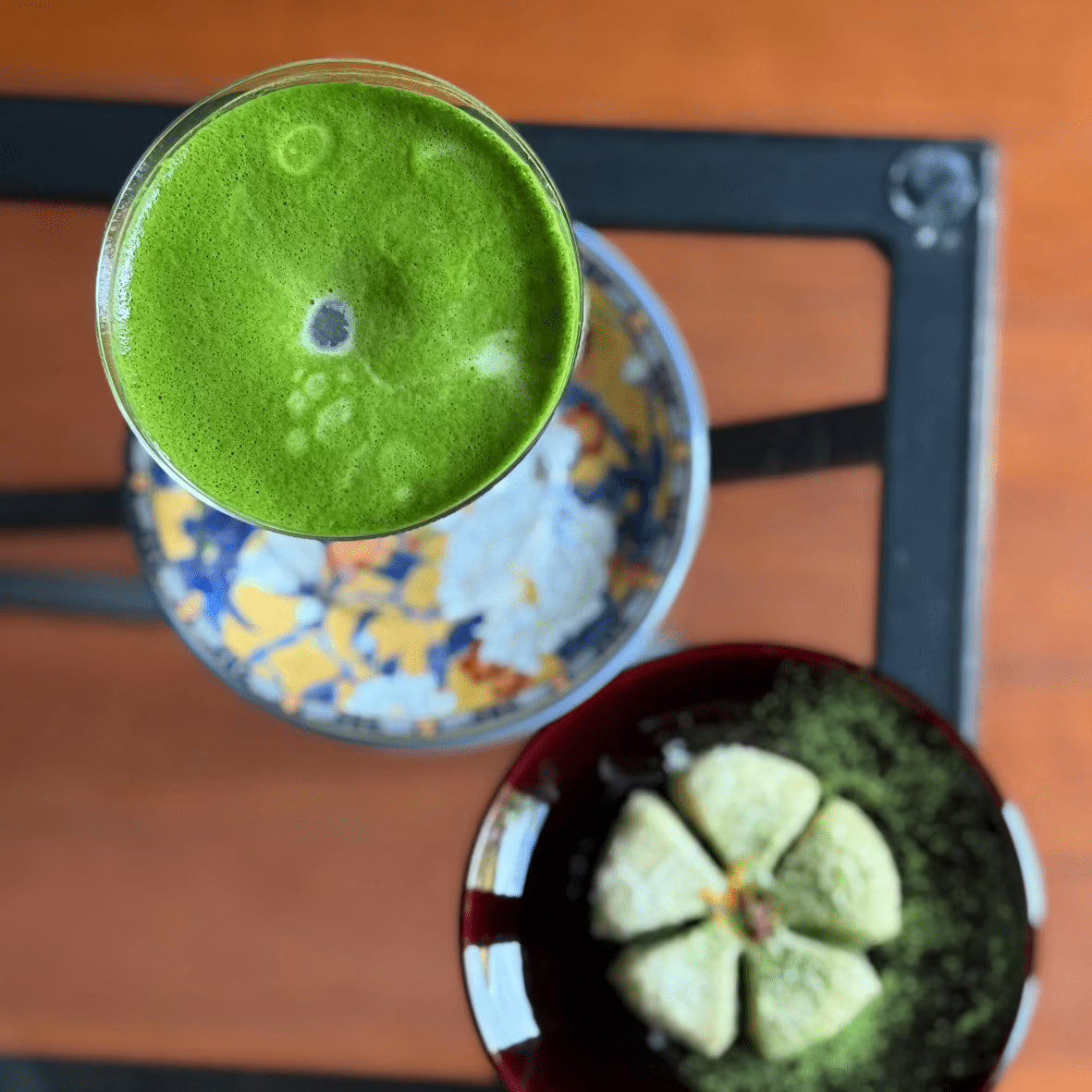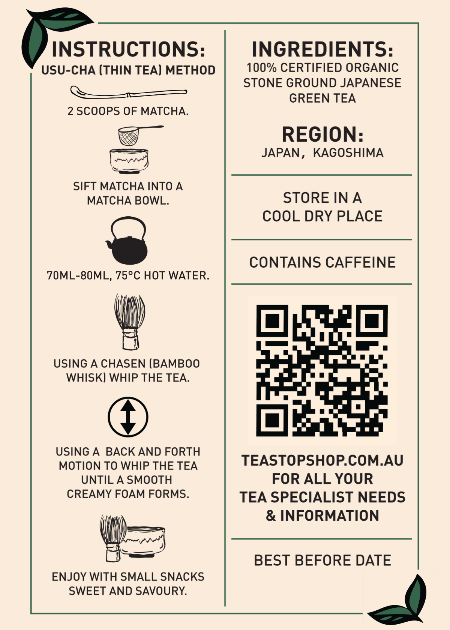
Why Matcha Is the Ideal Coffee Alternative
Share
Matcha is a finely ground green tea powder with roots in centuries-old Japanese tradition, and it's making a comeback. Its bright green color, rich umami flavor, and reputation for nurturing both body and mind have made it a beloved staple in tea ceremonies and modern wellness routines alike. As daily rituals shift toward mindful living and natural energy sources, more people are seeking out matcha as the ideal coffee alternative.
Interest in matcha's unique qualities is growing, especially among those looking for a milder, sustained energy boost without the jitters or crashes often associated with coffee. This rising trend reflects a demand for beverages that combine wellness, ritual, and sustainability.
In this article, we'll explore why matcha stands out as an excellent coffee substitute. We'll discuss its health benefits, compare it to coffee's effects, and provide tips on how to incorporate it into your daily routine.

The Rise of Matcha
Matcha has become increasingly popular in recent years, capturing the attention of tea lovers everywhere. This bright green tea powder, which has been used in Japanese tea ceremonies for centuries, is now enjoyed worldwide for its distinct taste and incredible health benefits.
Why is Matcha Becoming So Popular?
There are several reasons behind the growing popularity of matcha:
1. Cultural Connection
Matcha represents a long-standing Japanese tradition, evoking feelings of mindfulness and ritual that resonate with modern lifestyles seeking balance and tranquility.
2. Health Benefits
Matcha offers a wide range of health benefits, making it a favorite among those pursuing wellness. Some of the key advantages include:
- Rich in Antioxidants: The high concentration of catechins, particularly EGCG (epigallocatechin gallate), supports overall health by fighting free radicals.
- Boosts Metabolism: Matcha can aid in weight loss by enhancing metabolic rate and promoting fat oxidation.
- Enhances Calmness: The presence of L-theanine induces relaxation without drowsiness, providing a calm alertness.
- Detoxification: Chlorophyll in matcha helps detoxify the body naturally.
3. Sustainability-Minded Consumption
Organic matcha aligns with ecological consciousness, appealing to those dedicated to sustainable living practices.
The Appeal of Matcha
Matcha's appeal goes beyond its vibrant color; it also has the remarkable ability to combine tradition with wellness. As more individuals discover these benefits, it's evident why matcha is becoming a staple in households around the globe.
Matcha vs. Coffee: A Caffeine Showdown
When comparing the caffeine content in matcha and coffee, the differences are both subtle and significant. One cup of traditionally-prepared matcha (using about 2 grams of powder) typically contains between 60–70 mg of caffeine, while a standard cup of black coffee averages around 95 mg or more. Though coffee delivers a stronger initial jolt, matcha’s unique composition offers a different experience.
The secret lies in matcha’s natural pairing of caffeine with an amino acid called L-theanine. Unlike the rapid spike and subsequent crash often associated with coffee, L-theanine gently moderates the absorption of caffeine in matcha, providing calm alertness and steady focus. This synergy is sometimes described as zanshin, a state of relaxed readiness cherished in Japanese mindfulness traditions.
The Effects of Caffeine on the Body
- Coffee: Quick release of caffeine, higher likelihood of jitters or energy crashes
- Matcha: Gradual release supported by L-theanine, promotes a sense of calm focus
Many people seeking sustained clarity find that the effects of L-theanine on energy levels help them remain centred through busy mornings or long afternoons. The result is not just a burst of wakefulness, but an uplifted clarity that aligns beautifully with mindful living.
Why Matcha is Healthier Than Coffee
Matcha's appeal extends beyond its balanced energy boost. When comparing health benefits between matcha and coffee, matcha emerges as a superior choice in several key areas:
1. Antioxidant Powerhouse
Matcha is packed with antioxidants, particularly catechins like EGCG (epigallocatechin gallate), which are known for their cancer-fighting properties. Coffee does contain antioxidants, but not at the same level as matcha. The concentrated nature of matcha means you consume the entire leaf, maximizing your intake of these beneficial compounds.
2. Brain Booster
Matcha is renowned for enhancing cognitive function. The combination of caffeine and L-theanine promotes alertness without the jittery side effects often associated with coffee. This synergy supports improved memory, attention, and brain performance.
3. Weight Management Ally
Drinking matcha can aid in weight management. Studies suggest that the catechins in matcha boost metabolism and increase fat oxidation during exercise. Unlike coffee, which can sometimes lead to increased appetite due to fluctuating blood sugar levels, matcha provides steady energy that helps curb hunger.
4. Inflammation Fighter
Chronic inflammation is linked to numerous health issues. Matcha's rich antioxidant profile helps combat inflammation more effectively than coffee. Regular consumption can contribute to a lower risk of inflammatory diseases such as arthritis.
5. Oral Health Defender
Matcha contains chlorophyll and other compounds that promote oral health by reducing bacteria and acidity in the mouth. Coffee, on the other hand, can stain teeth and contribute to dental issues over time due to its acidic nature.
6. Gut-Friendly Choice
For those sensitive to stomach discomfort, matcha is gentler on the digestive system compared to coffee. The high acidity in coffee can lead to heartburn or indigestion, while matcha's natural compounds support a healthier gut environment.
Embracing matcha not only provides a balanced energy boost but also offers an array of health benefits that make it a wise choice for daily consumption.

Making the Switch: From Coffee to Matcha
Switching to matcha from coffee brings a unique set of experiences—some subtle, others more pronounced. The ritual itself shifts: matcha preparation invites presence and intention, often using traditional Japanese tools like the chasen (whisk) and chawan (bowl). Yet, beyond the ceremony, many notice a few initial adjustments during this transition.
Common Experiences During the Transition
- Tiredness or “Caffeine Dip”: Coffee’s quick jolt can make matcha’s gentler lift feel mild by comparison at first. Some may feel temporary sluggishness as their body recalibrates to a steadier, less spiky release of energy.
- Taste Differences: Matcha’s umami-rich, grassy notes contrast with coffee’s robust bitterness. Palates accustomed to dark roasts or espresso might need time—and a few bowls—to appreciate matcha’s layered flavors.
- Ritual Shift: Preparing matcha is a mindful act. Those used to grabbing a takeaway coffee may find the measured steps both calming and unfamiliar.
Why Some Find It Challenging
- Habitual Comfort: Coffee routines run deep—morning brews, social café stops, even the aroma. Letting go can feel like losing an old friend.
- Expectations Around Energy: Coffee’s rapid stimulation is different from the calm alertness of matcha. Adjusting these expectations is part of the journey.
- Social Connections: For some, coffee culture is about connection—switching from coffee to matcha may initially feel isolating in settings where tea isn’t yet the norm.
Embracing these changes opens up new ways to experience energy and mindfulness throughout your day. The next step is learning how to prepare matcha authentically for optimal flavor and texture.
The Ritual of Brewing Matcha: A Step-by-Step Guide
The art of matcha preparation is a mindful ritual, inviting clarity and presence into each moment. Using traditional tools and methods honors centuries-old Japanese tea culture while enhancing the flavor, texture, and wellness benefits found in every cup.
Matcha Preparation Techniques: Step-by-Step
1. Gather Your Tools
- Chawan (matcha bowl)
- Chasen (bamboo whisk)
- Chashaku (bamboo scoop)
- Sifter
- Ceremonial grade matcha powder
2. Sift the Matcha
Place 1–2 scoops (about 1–2 grams) of ceremonial grade matcha into your bowl using the chashaku. Sift to remove any clumps, ensuring a smooth, silky consistency.
3. Add Water
Heat filtered water to 70–80°C (not boiling). Pour about 60–70ml over the sifted matcha.
4. Whisk Mindfully
Hold the chawan steady. Whisk briskly with the chasen in an M or W motion until a fine froth appears on the surface.
5. Sip with Intention
Enjoy immediately, savoring both aroma and texture.
Ceremonial Grade Significance in Matcha Quality
Selecting ceremonial grade matcha ensures you're experiencing the very best nature has to offer—vivid green color, delicate umami sweetness, and a soft, creamy finish. This quality comes from meticulous cultivation and careful hand-picking of young tencha leaves from Japan’s most renowned fields.
Ceremonial grade signifies not only superior flavor but also higher concentrations of antioxidants and L-theanine for a truly nourishing cup.
This mindful approach transforms a simple drink into a grounding daily practice, connecting you directly to generations of craftsmanship and natural purity.
Conclusion
Choosing matcha as your daily beverage brings a gentle, sustained energy and a sense of mindful ritual that deeply nourishes body and spirit. The benefits of choosing matcha over coffee as a beverage choice—ranging from antioxidant support to reduced jitters—reflect a holistic approach to wellness that honors both Japanese tradition and environmental care.
Experience the tranquility and vibrant flavor of premium organic teas with every sip.
Explore our collection at Tea Stop Shop: each blend, from ceremonial-grade matcha to hand-blended loose leaf teas, invites you to slow down, savor the present moment, and rediscover the simple joy in your cup.
